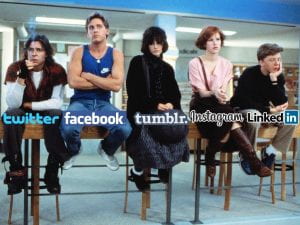 Breakfast Club meme
Breakfast Club meme
ESL-EFL class about teenage peer pressure and personality types, based on clips from The Breakfast Club
I’m going to put my cards on the table here and confess to a not-so-guilty pleasure: The Breakfast Club. John Hughes’s 1985 high-school comedy-drama is by a long distance the film I have seen the most times. If I were to guess I would reckon I’ve watched it on over 30 occasions. The film was a great comfort to me in my teenage years when I probably bunked off school to watch it, but I was first introduced to it by my older brother when I was still in primary school and have revisited it more recently on DVD. Continue reading

 Copyright
Copyright 


